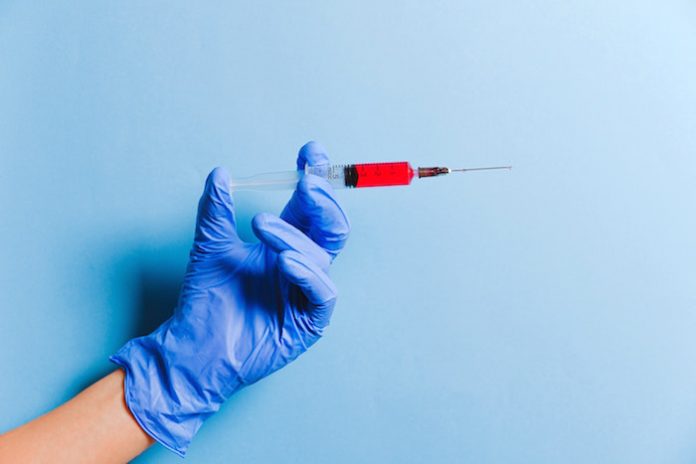Managing medical waste in a healthcare facility is as crucial as attending to each patient’s specific needs. All types of medical waste are potentially hazardous, but the degree of the harm often varies.
When handling infectious waste, care should be taken to ensure they are disposed of without any spillage or contamination with other trash.
The nature of infectious waste makes them vulnerable to bacteria, viruses, and other disease-causing germs. In this article, we’re going to explore the five practical ways of handling infectious waste. Before we proceed, let’s first discuss the common types of infectious waste.
Types of Infectious Waste
Infectious waste ranges from fluids to solids, to materials that give microorganisms a suitable breeding ground. According to the World Health Organization, waste contaminated with blood or body fluids, swabs, and even bandages from ailing persons are considered highly infectious.
We’ve grouped infectious waste into five types:
Blood and body fluids
Blood and blood products, such as serum or plasma tissues, are highly infectious. The patient doesn’t necessarily have to show symptoms for their blood to be considered contagious. Some people can be asymptomatic, yet they are sick, and their blood is infected. Thus, any blood products should be disposed of with care into sealed containers.
However, not all bodily fluids are considered infectious. Some are regulated and must be disposed of as contagious. These include cerebrospinal fluid, amniotic fluid, pericardial fluid, pleural fluid, etc.
Laboratory waste
Waste such as cultures, used reagents, or even animal extracts from controlled experiments may contain infectious pathogens. At times, the materials used in drug developments or maybe research analysis need to be disposed of. Such items could include everyday waste products, e.g., tissue papers, and you may be tempted to just throw them into the trash cans.
However, if those were exposed to potentially hazardous chemicals, they could have an enormous health effect on the general public.
Sharps
Scalpels, needles, blades, or any “sharp” objects used to inject or treat patients are highly infectious. According to https://www.medprodisposal.com/sharps-container-disposal/, sharps should be sterilized before disposal to deactivate all viruses and bacteria. This good practice goes a long way in preventing infections among healthcare workers and medical waste disposal personnel. Broken glasses, tubes, and lab kits fall under this category.
Pathological waste
These are waste removed from either a human or an animal during surgical procedures. They could include organs or tissues with body fluids. Such pieces are treated as highly infectious, and care should be taken when extracting, transferring, and disposing of them.
Chemotherapy waste
Depending on the health conditions of the patient, chemotherapy waste can be highly infectious. Therefore, all the tools used during a chemotherapy session should be sterilized before disposal. Such tools include but aren’t limited to vials, tubing, gloves, pads, IV bags, and sheets.
Handling Infectious Waste
Prevention is better than cure, and this should often be the basis when handling infectious waste. You’ll never know when, how, and where the infections might start. This makes it necessary to always be ready and prepared.
Below are the ways you can safely handle infectious waste without running the risk of contracting or spreading some life-threatening pathogens.
Use suitable medical waste containers.
Not all medical waste should be disposed of in one container. Solid waste, for example, should be separated from liquid waste and each transferred into their respective medical containers. Some waste, such as sharps, should be put in puncture-proof boxes.
Also, medical containers are different from conventional dustbins. Medical garbage containers should be leak-proof, robust, airtight, and lockable.
Minimize contact.
There are many ways in which a healthcare professional can avoid direct contact with potentially infectious waste. One is by wearing the appropriate personal protective equipment. Handling medical waste without the gloves, mask, and veil on, etc. is against OSHA’s standards for medical waste disposal.
Don’t overfill waste containers.
It’s recommended to have the medical containers replaced once they are ¾ full. This reduces the chance of spillage (in the case of liquids) and injuries in the case of sharps. To be on the safer side, the containers should be kept away or transported to the respective disposal facilities regularly—e.g., once or twice a day.
Use colored containers for medical waste to avoid confusion.
Most healthcare facilities take this precaution for granted, and while this may seem somehow unnecessary, it can lead to irreversible damages. Imagine disposing of sharps or body fluids in a regular dustbin just because they look identical, and you couldn’t be keen enough.
What this translates to is potential injuries, and even worse, the spread of infectious pathogens. How long will it take to trace the infection back to the very dustbin? What will be your reaction? Exactly, you confused the two garbage bags because they look identical.
A solution to this is marking the medical bags, and when possible, have them be of a given color, e.g., red. Regular garbage bags can be of any color provided the two are distinguishable. For convenience, medical containers should be placed at strategic locations within the healthcare facility.
Partner with a professional medical waste management company.
Perhaps the most important of all the safety precautions and the most reliable is having the right people do the job. If you’re to handle waste disposal on your own, there’s a lot you can do, but still, you can’t beat the level guaranteed by a professional medical waste disposal company.
Managing infectious waste is even complicated for untrained personnel, and this can boost the odds of infections. To avoid risking the lives of healthcare workers and patients, partner with the right company that’s more comfortable with the job and possesses the much-needed skills.
Conclusion
Handling infectious waste doesn’t get any more complicated than failing to follow the above safety standards. Now that you know the different types of infectious waste and how to handle them safely, you’re better informed than the average healthcare professional. Go ahead, take your time, and put these safety precautions into action.
Find a Home-Based Business to Start-Up >>> Hundreds of Business Listings.

















































